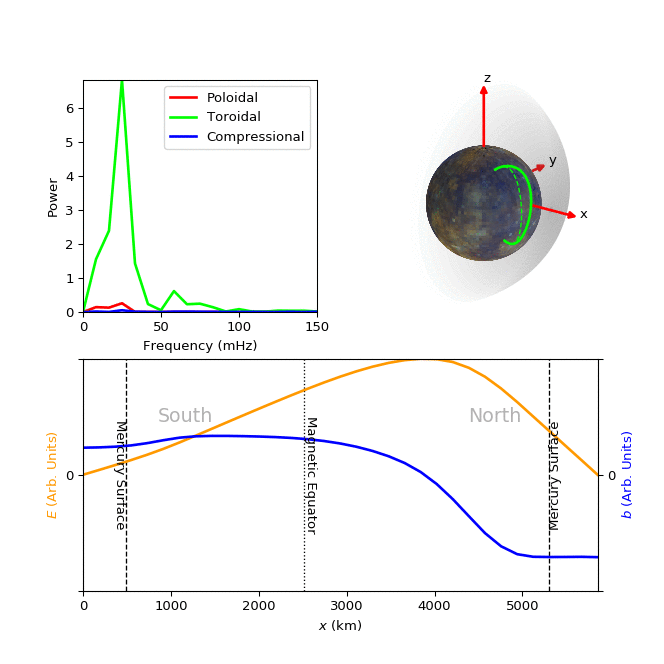MIST
Magnetosphere, Ionosphere and Solar-Terrestrial
Field line resonance in the Hermean magnetosphere: structure and implications for plasma distribution
by Matthew K. James (University of Leicester)
Mercury’s magnetosphere is the smallest and most active within our solar system, providing a unique laboratory for studying magnetospheric physics, where much can be ascertained using ultra low frequency (ULF) waves. ULF waves are a key mechanism in the transmission of energy, momentum and information around any magnetised plasma environment and have been observed in magnetospheres throughout the solar system (e.g. Mercury, Earth, Jupiter, Saturn and Ganymede). The frequencies and polarizations of a certain class of ULF waves, called magnetohydrodynamic shear Alfvén waves, can be used to diagnose the plasma mass loading within the magnetosphere. Shear Alfvén waves are transverse standing waves which exist on field lines bound at both ends to the planet in question, where the perturbed magnetic field is displaced azimuthally around the planetary magnetosphere. These waves are analogous to the waves standing on a guitar string, where only standing waves with discrete frequencies are supported. At Earth, these waves are often driven by solar wind forcing on the magnetosphere in a process known as field line resonance (FLR).
Until recently, it was thought that Mercury's magnetosphere was incapable of supporting such FLRs due to its relatively small size. Our study is the first statistical survey of FLRs in the Hermean magnetosphere; we used magnetic field observations from the spacecraft MESSENGER to detect 566 FLRs within the dayside of the magnetosphere. An example simulation of one such Hermean FLR is presented in the figure below, where the field oscillates with a combination of both the fundamental and second harmonic frequencies.The characteristics of these waves were used to determine plasma mass densities throughout the dayside magnetosphere. We also found that the structure of the resonant waves is highly asymmetric about the magnetic equator, with the largest field perturbations appearing north of the magnetic equator due to the offset of the magnetic dipole into the northern hemisphere of the planet.
For more information, please see the paper below:
James, M. K., Imber, S. M., Yeoman, T. K., & Bunce, E. J. (2019). Field line resonance in the Hermean magnetosphere: Structure and implications for plasma distribution. Journal of Geophysical Research: Space Physics, 124. https://doi.org/10.1029/2018JA025920

Figure: Top left panel shows the power spectrum of the poloidal (red), toroidal (green) and compressional (blue) components of a FLR detected using MESSENGER. The majority of the wave power is seen in the toroidal component at 25 mHz (fundamental frequency), some toroidal wave power is also present at 60 mHz (second harmonic). The top right panel is an animation showing how the displacement of the field line (solid green line) might vary with time, compared to the unperturbed field (dashed green line), as it oscillates with a combination of the two detected frequencies at the location of this resonance. The bottom panel contains an animation showing how the electric (yellow) and magnetic perturbation (blue) fields would vary in time along the length of the field line, x.